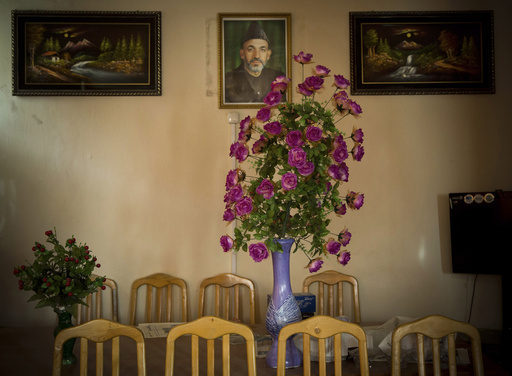If she had lived, there would have been so many more photos.
Anja could have gone to Kabul for the chaotic U.S. withdrawal, and to war-shattered Ukraine after the Russian invasion. She would have been at the Olympics, and at center court at Wimbledon. She would have been at all the places where compassionate photographers with trained eyes make it their business to be.
But on April 4, 2014, outside a heavily guarded government compound in eastern Afghanistan, Associated Press photographer Anja Niedringhaus was killed by an Afghan police officer as she sat in her car. She was 48 years old. Her colleague Kathy Gannon, who was sitting beside her, was badly wounded in the attack.
Anja had a convulsive laugh, a thick German accent and an irrepressible decency that elicited trust from the people on the other side of her lens. She trusted them back, making photographs that captured their struggle for humanity, even in some of the world’s most difficult places.
The three of us became friends in Sarajevo in the early 1990s, when ethnic fighting was savaging the former Yugoslavia and a generation of young photojournalists came into their own. Anja was at the European Pressphoto Agency. We were at the AP.
But while Anja was fiercely competitive, she was also fiercely loyal. Soon we were sharing armored cars, unheated hotel rooms, games of Yahtzee and too many Marlboros.
At a time when women journalists were rare in war zones, Anja was best known as a conflict photographer. Her work helped define the wars in Iraq, Afghanistan, and Libya. Some of the most memorable images from those dark pages in history — ones you might well recognize — came from her camera and her vision.
But Anja never made much out of being a woman surrounded by men. And to see only her conflict work would be a mistake.
She was one of the great sports photographers, whether capturing Serena Williams jumping for joy after a Wimbledon victory or the immense smile of British runner Mohamed Farah as he takes Olympic gold in the 5,000-meter. She photographed everything from European elections to global summits. She mentored young photographers everywhere she went. She expertly told small stories of everyday life in dozens of countries.
And despite her reputation as a war photographer, very often she found beauty and joy on assignment — even in those difficult places where she spent so much time. And especially in the place where she ultimately lost her life.
Just look at her photos. She found joy in the moment when an Afghan nomad tenderly kissed his infant daughter, and happiness among Afghan girls finally able to go to school. She found beauty as a swimmer waded into Lake Geneva at sunrise.
She did it all. Now she is 10 years gone. And these images — the ones that were so important to her and so important to understanding a jumbled world — are what is left to speak for her.
___
Jacqueline Larma is deputy director of photography for special projects for The Associated Press. Enric Marti is deputy director of photography for enterprise. Both are veteran AP photographers.
This website uses cookies so that we can provide you with the best user experience possible. Cookie information is stored in your browser and performs functions such as recognising you when you return to our website and helping our team to understand which sections of the website you find most interesting and useful.
